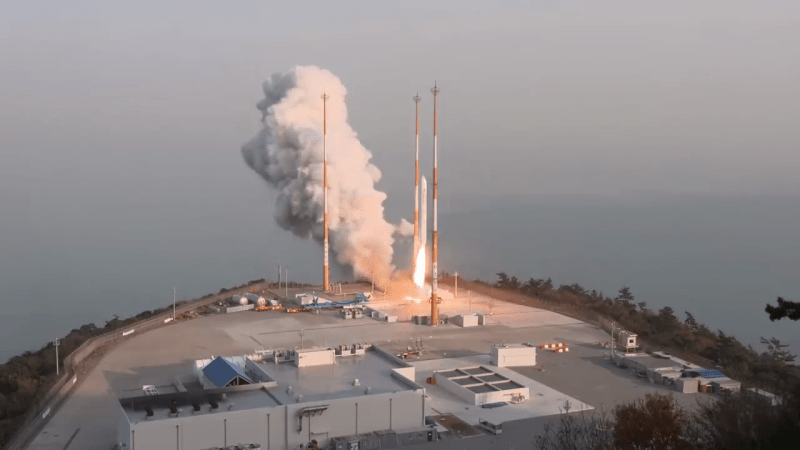There was a bit of excitement recently at the Naro Space Center on Outer Naro Island, just off the southern coast of the Korea Peninsula. The domestically developed South Korean Nuri rocket departed on its inaugural flight from launch pad LB-2 at 5pm in the afternoon on Thursday, 21 Oct. The previous launch in the KSLV-2 program from this facility was in 2018, when a single-stage Test Launch Vehicle was successfully flown and proved out the basic vehicle and its KRE-075 engines.
This final version of the three-stage Nuri rocket, formally known as Korean Space Launch Vehicle-II (KSLV-2), is 47.2 m long and 3.5 m in diameter. The first stage is powered by a cluster of four KRE-075 sea-level engines having 3 MN of thrust. The second stage is a single KRE-075 vacuum engine with 788 kN thrust, and the final stage is a KRE-007 vacuum engine with 69 kN thrust (all these engines are fueled by Jet-A / LOX). In this maiden flight, the first two stages performed as expected, but something went wrong when the third stage shut off prematurely and failed to gain enough velocity to put the 1400 kg dummy satellite into orbit.
A committee formed to investigate the flight failure convened this week, and issued a statement after a preliminary review of the collected telemetry data. So far, all indications point to a drop in oxidizer tank pressure in the third stage. This could be the result of a leak in the tank itself or the associated plumbing. They will also investigate whether a sensor or other failure in the tank pressurization control system could be at fault. A second launch is currently scheduled for May of next year. Check out [Scott Manley]’s video below the break, where he discusses the launch itself and some history of South Korea’s space program.
















Now this is one Korean rocket test that I can support. ;)
Le me guess, you’re not South Korean?
Yep, it’s nice to see a rocket launched from Korea that’s NOT meant to carry a nuke.
As the video points out, the ROK was long limited in its missile development as a by-product of US non-proliferation policy. Given that development by the DPRK, India, Iran, and Pakistan have largely rendered the missile technology side of that policy moot, the ROK appears to have the will and certainly the resources to make reasonably rapid progress on a home grown space launch capability.